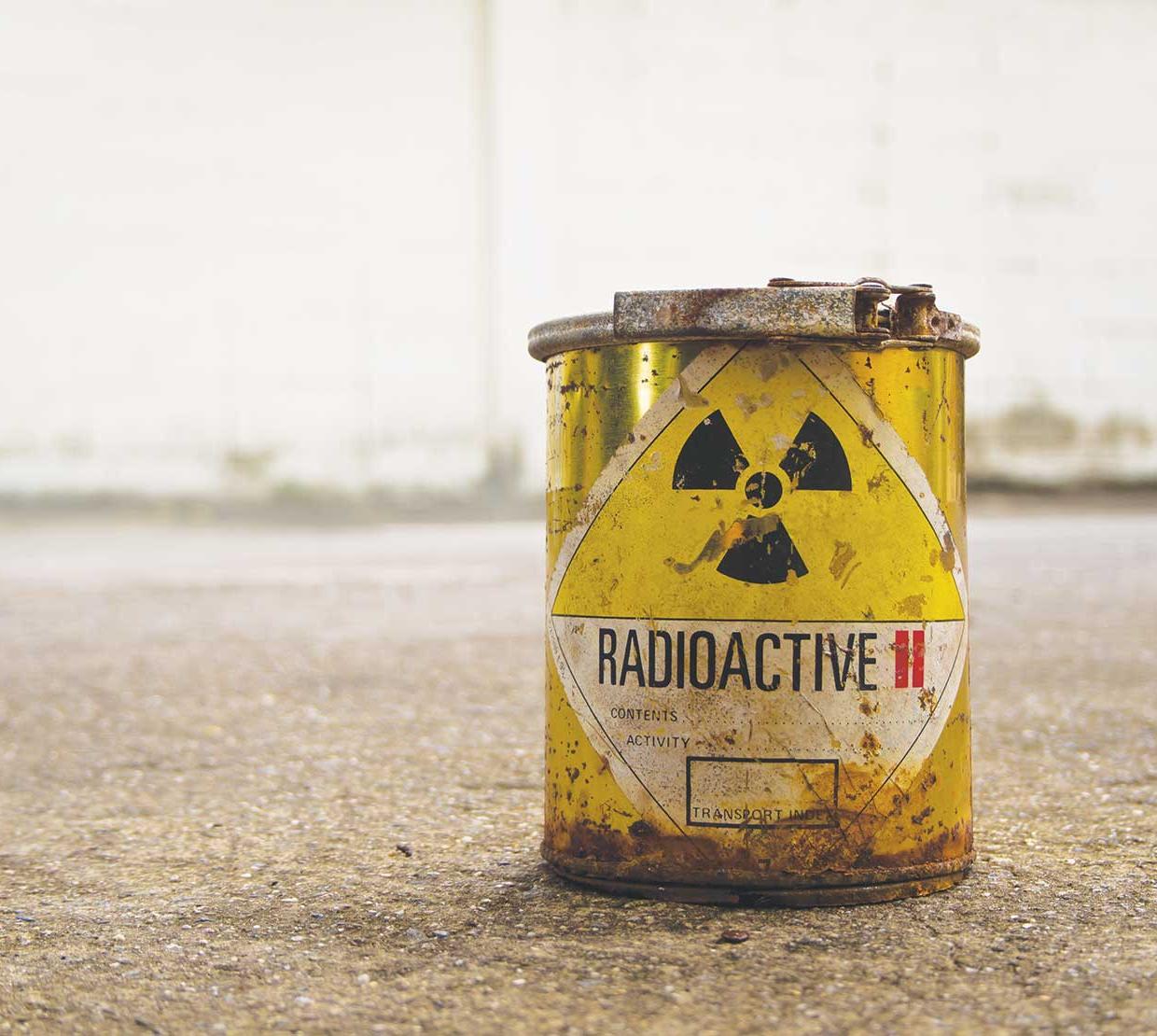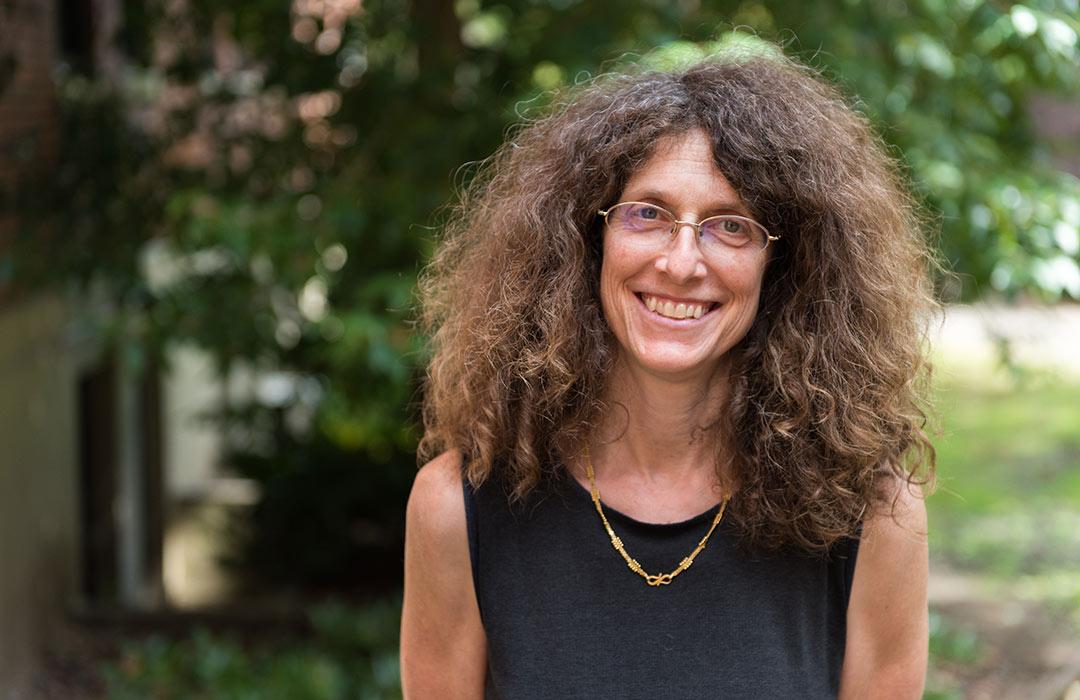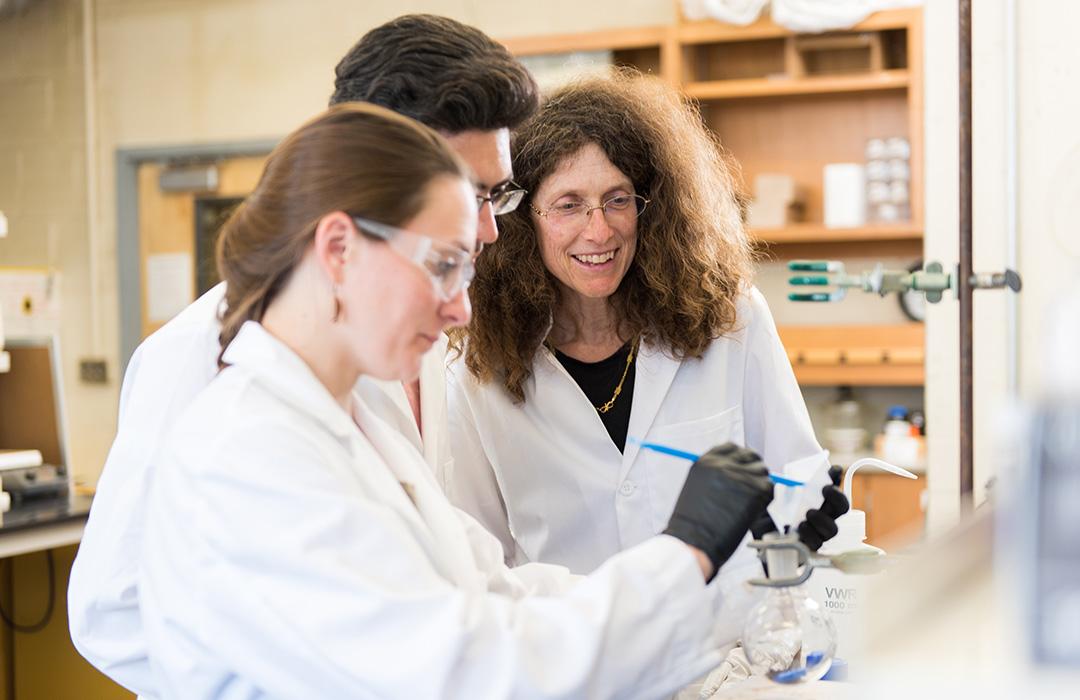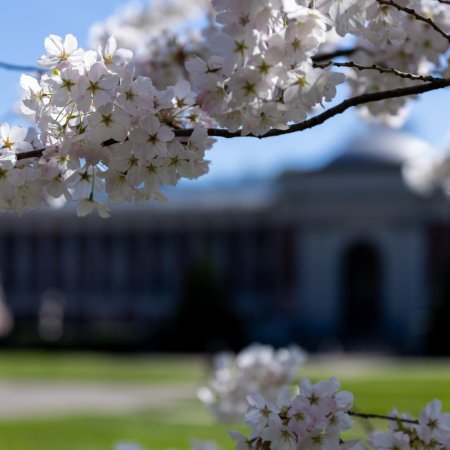Nyman’s objective is to help her students develop professionally and intellectually. She is an indefatigable mentor, investing much time and energy to help students accomplish their goals.
“I tell my students to see what parts are missing in their CV. Is it outreach or mentorship opportunities? If it is a fellowship or an award, I say, ‘let’s nominate you for an award,’” Nyman said. “Success depends on all these different pieces as well as work ethic and curiosity.”
“The opportunities I have been offered here are truly phenomenal. I am essentially getting experience that a grad student would be getting, and it makes me extremely appreciative of Dr. Nyman.”
These have been exciting times for Nyman and her students. Three of her graduate students were awarded external and OSU fellowships as well as internships at national labs. Arteaga, who was recruited for an internship at the prestigious Pacific Northwest National Laboratory, won a national GEM Fellowship, awarded to underrepresented students in science and engineering to give them valuable exposure to high-level technical careers in industry.
“All the successes of my students make me very happy. These types of experiences are really important for their careers,” Nyman remarked.
An ambitious mentor, Nyman has inspired her undergraduate researchers to work towards a first-author paper during their time in her lab, a rare feat for an undergraduate student. “My undergraduate students are not just assistants in the lab. They are here for the opportunity to develop their career or to prepare for graduate school.”
Former student Collin Muniz (’18), now pursuing a Ph.D. in chemistry at the University of Southern California, successfully published a paper in the Journal of Solid State Chemistry before graduation.
“My research experience with Dr. Nyman has been invaluable,” said Muniz. “She has trusted me with so much freedom in my position. The opportunities I have been offered here are truly phenomenal. I am essentially getting experience that a grad student would be getting, and it makes me extremely appreciative of Dr. Nyman.”
The Sandia years
Nyman began her scientific career in nuclear waste management and waste treatment technologies in Sandia National Laboratories in Albuquerque, New Mexico. At Sandia, she was a principal investigator in pioneering research on discovering materials that remove radioactive isotopes such as cesium, strontium, and plutonium from nuclear wastes. The goal was to remove and safely store the most dangerous radioactive substances from nuclear wastes.
At Sandia, Nyman spearheaded efforts to clean up contaminants across some of the most challenging nuclear problems of our era, ranging from cold war era nuclear wastes to the Fukushima Daiichi nuclear power plant in Japan. An important problem has been developing a sorbent for removal of strontium-90, plutonium and neptunium from nuclear wastes. Nyman worked to develop a new sorbent that was 20 times more effective for strontium-90 capture, 40 times more effective for Plutonium capture, 5 times more effective for neptunium capture than the baseline sorbent. Sorbents are insoluble materials used to recover other substances by absorption or adsorption.
The metal oxide sorbent was commercialized for use at the Savannah River Site, a nuclear facility in the state of South Carolina, built in the 1950s to refine nuclear materials for deployment in nuclear weapons. Nyman’s work on cesium-139 removal technologies translated to treating contaminated seawater at the disabled Fukushima Daichii nuclear power plant in Japan.
Through her work on nuclear waste treatment and containment, Nyman made a pathbreaking discovery of an entirely new class of polyoxometalates (POMs) that she termed the polyoxoniobates (PONbs). She reported this fundamental research discovery in Science. PONbs are extremely active basic compounds that have a strong binding effect with positively-charged molecules including biomolecules (molecules present in living organisms). These new POMs opened up the field to new discoveries and applications that include the potential development of a new class of nerve agent degraders.
Due to her expertise in actinide chemistry, Nyman was selected to be a member of the materials science of actinides program in the Department of Energy’s inaugural Energy Frontier Research Center (EFRC) program (2009-18). Actinides are radioactive elements and include uranium, thorium and plutonium, elements most commonly used in nuclear reactors and weapons. In the EFRC, Nyman’s work focused on understanding chemistries of actinides in the nuclear fuel cycle and how they operate in nature.
Pioneering materials chemistry research at OSU
Nyman transitioned to academia after nearly 15 years at Sandia. She arrived at OSU in 2012 as an associate professor of chemistry. Nyman was drawn to academia because she wanted to experience once again the camaraderie and the excitement of discovery that she had enjoyed in graduate school. She also wanted an opportunity to extend her chemistry research in new directions. Nyman was invited for interviews by several universities but Oregon State held the most appeal because of its innovative Center for Sustainable Materials Chemistry (2011-19).
“My expertise was exactly what they were looking for because their focus was making thin film materials from metal-oxo cluster (including POMs) building blocks,” Nyman said.
The move also suited Nyman’s three kids. “My youngest had just turned five. The timing was just right in terms of my kid’s ages. One was about to start high school, one was starting kindergarten and one was in the middle.”
One of the boons of moving to OSU was that Nyman was able to immediately submit a proposal and receive funding from the Department of Energy to focus studies on PONbs—something she was not able to do at Sandia. Additionally, she spent her first summer at OSU, working alongside a graduate student and a postdoctoral scholar; collecting, processing and interpreting X-ray scattering data for metal-oxo cluster chemistry—”one of the best summers of my life!” said Nyman. These efforts eventually enabled a second paper for the journal Science. Nyman’s research was related to stabilizing iron oxide clusters found in nature, and X-ray scattering marked the reaction pathway.
“Studying cluster forms of actinides helps us understand the frontier of the periodic table where there’s been far less exploration than every other part of the periodic table.”
She and her research group have now become highly sought collaborators and world leaders in applying the technique of X-ray scattering to understand the structure of metal-oxo clusters in solution to gain insights about the behavior of high-performance materials for energy storage, degradation of dangerous substances, etc. Nyman is excited about international collaborative X-ray scattering studies including DNA for nanotechnology (Spain), hydrogen storage (U.K.), and magnetic clusters (China).
Metal-oxo clusters are compounds produced when metals combine with oxygen, and they serve a number of important purposes and influence processes everywhere. Metal oxides are present in electronic devices, in coagulants to help purify drinking water and as catalysts for decontamination. Nyman’s group conducts research across the entire periodic table on different metal blocks of cluster chemistries for diverse applications related to energy or the environment.
All metals on the periodic table act differently, and only a few have the right chemistry that behaves well enough to yield these clusters easily. Nyman and her students work on innovating new chemistries to discover the cluster forms of actinides, for instance developing uranyl peroxide clusters to apply to separations in the nuclear fuel cycle. They investigate the relevancy of metal-oxo clusters in complex mixtures to develop a sustainable nuclear fuel cycle that includes nuclear material recycling, disposal, storage and cleanup. But her research has also led to new knowledge about fundamental chemistry.
“Studying cluster forms of actinides helps us understand the frontier of the periodic table where there’s been far less exploration than every other part of the periodic table,” Nyman observed.
Nyman is also a co-principal investigator on a $12.5 million National Nuclear Security Administration (NNSA) grant for an Actinide Center of Excellence, which is headquartered at the University of Notre Dame, to conduct research in actinide and nuclear chemistry important for stockpile stewardship in the United States. The goal of the research is to determine how actinide nuclear material ages, how it travels in the environment in the case of contamination, and how it can be recycled and repurposed (i.e. for nuclear energy).
For Nyman, one of the most rewarding parts of the project is to train students in actinide chemistry and to introduce them to national labs, especially NNSA labs, through internships. Two of Nyman’s current graduate students are involved with the project. Ian Collard works on Uranium oxide by combining the element with lanthanides (rare earth elements) like neodymium — the latter makes up the world’s strongest magnets present in wind turbines and also in hybrid vehicle brakes.
“Nobody has really looked deeply into combining lanthanides with actinides. So there is a lot of really interesting fundamental science to be learned, and discovery of new magnetic phenomena,” Nyman said.
Nyman’s groundbreaking research on cluster chemistry has resulted in 135 articles in academic journals including Science, Angewandte Chemie International Edition, The Journal of Physical Chemistry, Journal of the American Chemical Society and Dalton Transactions.






